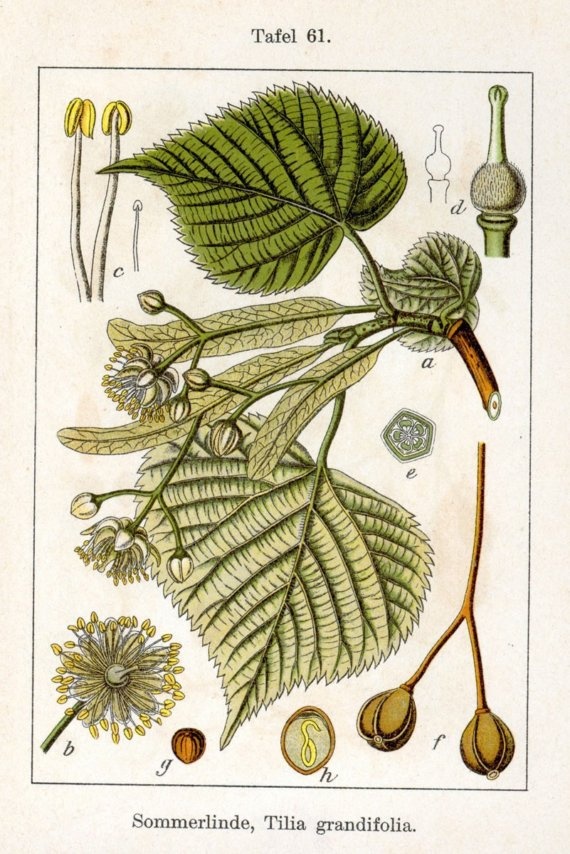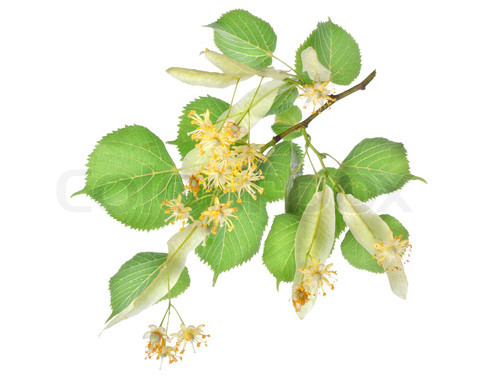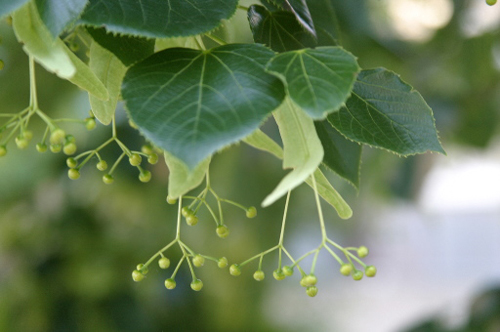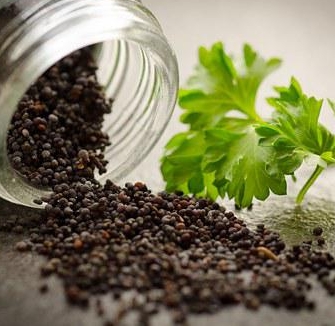THIS DELICIOUS SMELLING TREE IS A FAVORITE FOR CITY PLANNERS, PARTICULARLY ALONG THE FRONT RANGE, AND CAN OFTEN BE FOUND LINING SIDEWALKS AND DRIVEWAYS.
According to Greek Mythology, Linden trees were once a nymph named Philyra who gave birth to the centaur Chiron.
One of the most popular herbal teas in Europe, linden is enjoyed to calm the nerves and aid digestion and is safe enough for people of all ages to enjoy.
There are several different varieties, almost all of which are medicinal.
Linden flowers can also be added to tea when someone is experiencing a fever, as it’s diaphoretic properties help to warm the person up and increase sweating to help break the fever. It’s moistening properties also help the body to retain some of the water often lost during illness, thus helping to prevent dehydration.
Used long-term, linden has been shown to help reduce blood pressure.
Topically, linden blossoms infused into oil and water then made into a cream are an excellent remedy for dry, itchy, and irritated skin.
Its gentle and floral taste and smell make it a particular favorite of ours in teas, especially in this day and age of chronic stress and heartache.
The simple act of smelling linden blossoms often brings an ease to our senses; so the next time you are feeling like you need a break, take a walk outside to find a linden tree, and breathe deep…perhaps those city planners knew what they were doing afterall.



http://media-cache-cd0.pinimg.com/736x/c3/30/9f/c3309f34429607562be5a86f7815fe1d.jpg
http://www.colourbox.com/preview/3852499-506599-flowers-of-linden-tree.jpg
http://www.botany.wisc.edu/courses/botany_100/images/Americanbasswood.jpg
LINDEN MATERIA MEDICA
Latin Name: Tilia spp.
Common Name: Linden
Family: Tilaceae
Parts Used: flower blossoms
Habitat: Native to Europe, linden has been planted in abundance in the US and can often be found lining roads and sidewalks
Actions: Antispasmodic, calming, diaphoretic, nervine, cardio-tonic, emollient, moistening, soothing, vulnerary
Energetics: sweet, moist, slightly warm
Key Constituents: Flavonoids (quercetin, hespiridin, kaempferol, rutin), mucilage (arabino-galactans), volatile/essential oil (farnesol, linalool, geraniol, eugenol, camphor, carvone, citral, citronellol, limonene), phenolic acids (caffeic acid), phytosterols (β-sitosterol)
Uses:
- High blood pressure
- Nervous palpitations
- Anxiety
- Tension
- Stress
- Trouble sleeping
- Fevers
- Dry, irritated, or itchy skin
Dosage:
- Tea – 2 tsp. in 12 oz hot water, steep for 10-15 minutes, enjoy
- Tincture: 10 mL of a 1:5 once or twice per day.* 2-4 mL of the tincture (1:5 in 45% alcohol).** 1-2 mL tincture three times/day. ***
- Dosage information from *The Expanded Commission E by Blumenthal et al., **Natural Standard Database, and ***The Herbal Handbook: A User’s Guide to Medical Herbalism by David Hoffmann.
Cautions:
None known
PURCHASE HERE
Browse by category
- Aromatherapy
- Astrology & Magic
- Ayurdeva
- Botany Foraging & Gardening
- Chakras
- Digestion
- Earth Connection
- Energetics
- Flower & Gem Essences
- Folk Traditions
- Herbalism & Holistic Health
- Immune Support
- Materia Medica
- Mushrooms
- Nutrition
- Seasonal Living: Autumn
- Seasonal Living: Moon
- Seasonal Living: Spring
- Seasonal Living: Summer
- Seasonal Living: Winter
- Skin & Body Care

Don’t Miss a Thing!
Enter your email below to be the first to know about sales, new products and tips for taking care of your pieces.

